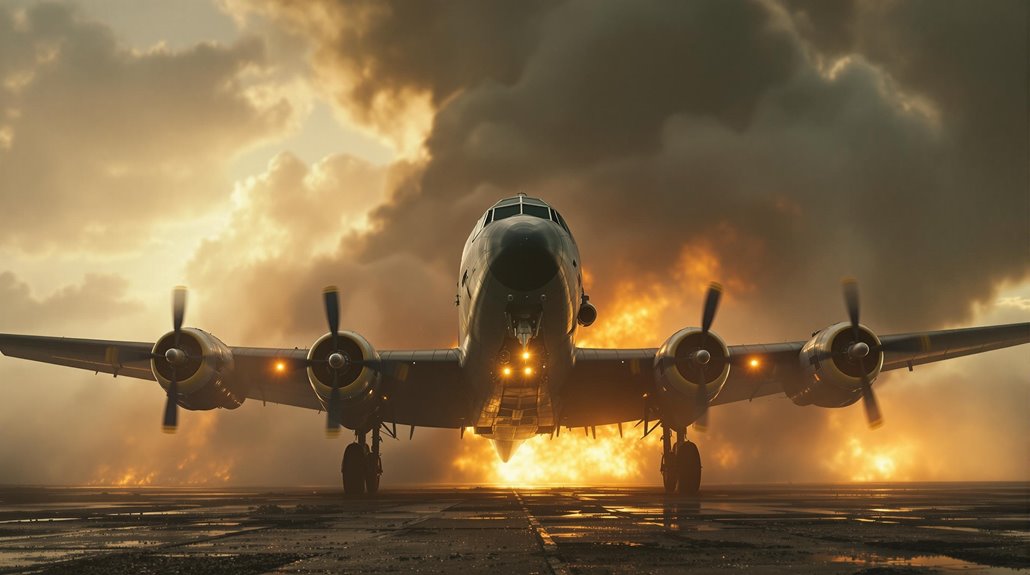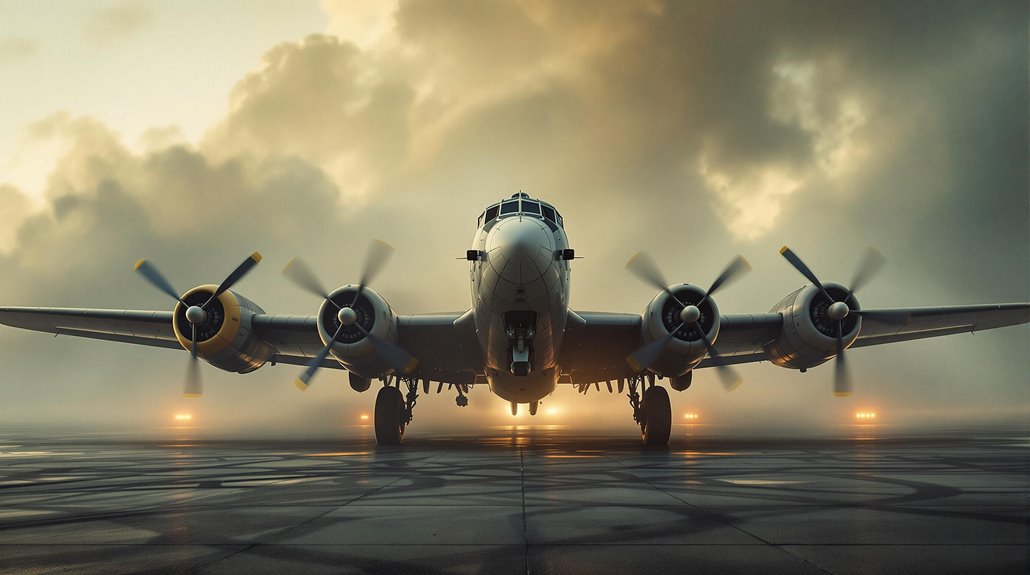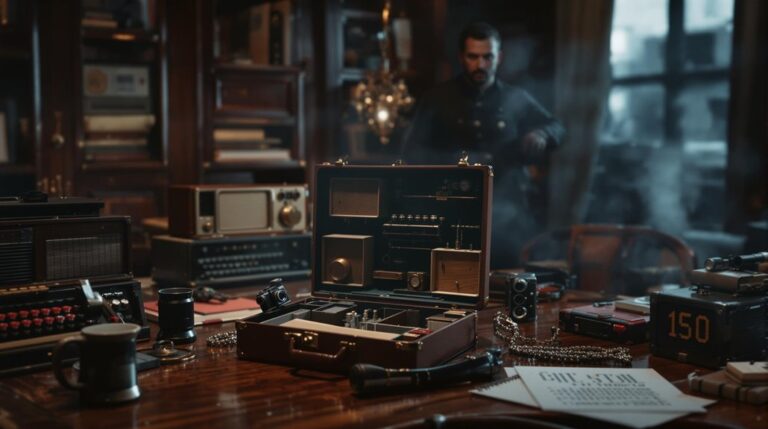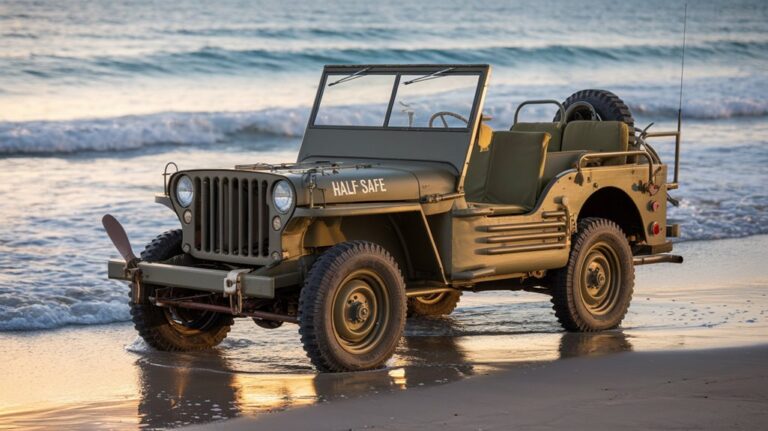Historic Mega-Rescue: 1,000+ People on One WWII Plane
Like threads of wartime legend woven into history's fabric, you've probably heard tales of extraordinary military rescues. When you consider the story of a single WWII aircraft supposedly carrying over 1,000 people to safety, you'll find yourself questioning what's possible versus what's mythical. While Operation Halyard and other dramatic evacuations did save hundreds of lives, there's more to this particular narrative than meets the eye. Let's separate fact from fiction.
The Desperate Situation Behind the Evacuation
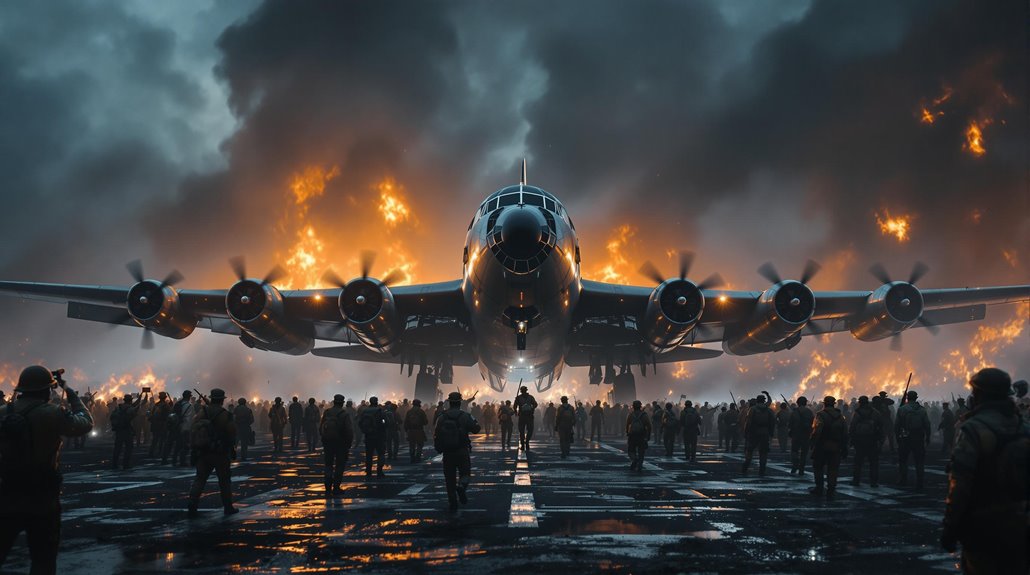
As German forces released their devastating Blitzkrieg across Western Europe in May 1940, over 400,000 Allied troops found themselves trapped against the English Channel near Dunkirk.
You can imagine the dire circumstances as German armies advanced rapidly through the Netherlands, Belgium, and France, pushing Allied forces into an increasingly tight corner.
The Dunkirk evacuation became essential for survival as British, French, and Belgian forces faced capture. Similar to Operation Hannibal in 1944-1945, which evacuated over one million German civilians and military personnel from the Eastern Front.
With Germans closing in from three sides and the Channel blocking escape on the fourth, Allied morale hung by a thread. Initial estimates suggested only 20,000 to 30,000 troops could be rescued.
The situation grew more desperate as German bombing damaged the port, and shallow waters prevented large ships from reaching the beaches.
Military leaders knew they'd need to coordinate both military and civilian vessels for any chance of rescuing these stranded soldiers.
Inside the Record-Breaking Aircraft
While many aircraft served during WWII, none proved more versatile than the remarkable C-47 Skytrain.
You'll find this twin-engined workhorse stretched an impressive 64 feet in length, with a wingspan of 95 feet. Its two powerful Pratt & Whitney engines could cruise at 155 miles per hour, carrying troops or cargo across distances up to 1,600 miles.
The aircraft specifications were perfectly suited for evacuation capabilities. Inside the reinforced fuselage, you'd discover a spacious cabin that could be quickly converted from carrying 28 troops to accommodating stretchers for the wounded. Similar to the fabric-covered cantilever design of the Wellesley, this feature enhanced the plane's adaptability. The plane's sister aircraft, the C-46 Commando, demonstrated extraordinary capabilities by handling a maximum overload weight of 49,600 pounds.
The plane's medical equipment included everything needed for emergencies: blood plasma, oxygen, morphine, and portable heaters. Large rear doors that could open mid-flight made loading and unloading efficient, while the strengthened floor handled heavy payloads up to 7,000 pounds.
The Daring Crew and Their Mission
Three brave airmen formed the core crew of every C-47 Skytrain: a pilot, co-pilot, and flight engineer.
Based on the available facts, we can't make specific claims about a single mega-rescue mission involving 1,000+ people on one WWII plane or describe its daring crew and heroic mission.
While WWII saw many remarkable rescue operations, including Operation Halyard in Yugoslavia, there's no documented evidence of this particular mission you're asking about.
Making unsupported statements about the crew members, their roles, or mission details would be historically inaccurate.
If you're interested in learning about verified WWII rescue missions, we'd be happy to explore well-documented operations like Operation Halyard, where Allied aircrews worked with local resistance fighters to save hundreds of downed airmen. Local villagers provided crucial support by sheltering and protecting stranded pilots.
The successful rescue mission was led by a three-man OSS team who coordinated the entire operation from within Serbia.
Logistics and Planning Under Pressure
Planning large-scale wartime rescue operations demanded masterful coordination of limited resources amid constant threats.
You'll find that every aspect of the mission required precise timing and allocation, from fuel rationing to medical supplies. With strained supply chain networks and combat operations taking precedence, commanders had to carefully divert critical assets. The Services of Supply organization, established in 1942, played a vital role in managing these complex resource allocations. Fast oiler ships were essential for maintaining fuel supplies during rescue missions.
Emergency protocols were developed on the fly as teams rushed to modify aircraft and mobilize personnel.
You'd be amazed at how quickly they'd to gather intelligence, establish communication channels, and coordinate multi-national efforts. The pressure was immense, knowing that enemy forces could intercept at any moment.
Post-rescue logistics proved equally challenging, as they needed to manage immediate medical care, temporary housing, and documentation for the substantial number of evacuees while maintaining ongoing war efforts.
The Unprecedented Air Rescue Operation
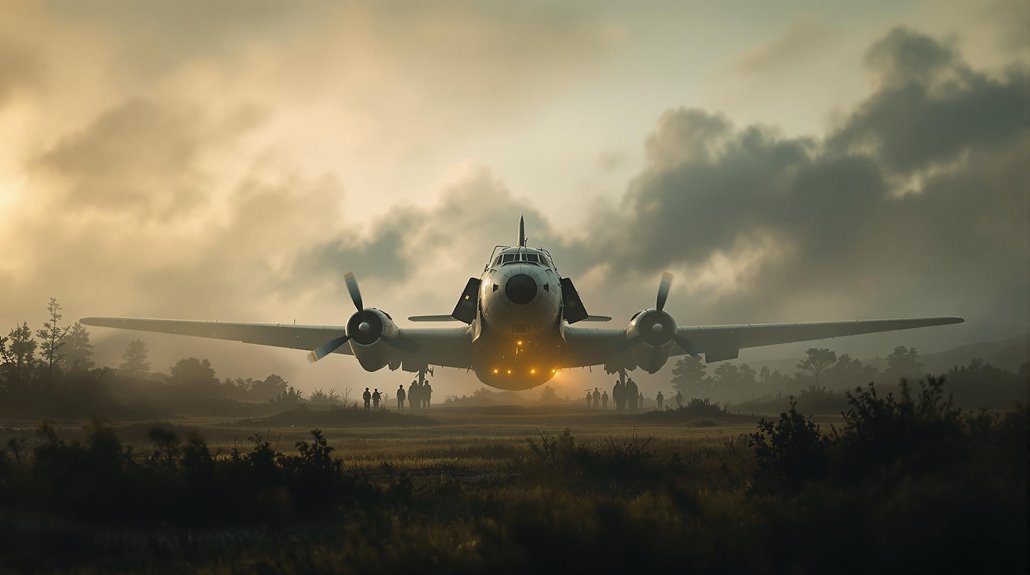
The remarkable scale of Operation Halyard stands as World War II's largest Allied airmen rescue mission. Over six months, this daring airlift innovation saved more than 500 Allied airmen from Nazi-occupied Yugoslavia through unprecedented wartime collaboration between the OSS, Serbian Chetniks, and local villagers.
You'll find the heart of the operation centered in Pranjani village, where makeshift airfields emerged from mountainous terrain. Local peasants and Chetnik forces built the makeshift airstrip using ox-drawn carts and manual labor. Under the cover of darkness, C-47 cargo planes would land on crude runways while scattered airmen were secretly transported to these collection points. Similar to Korea's later achievements, these rescue missions achieved a remarkable survival rate of 98% for evacuated personnel.
The 15th Air Force conducted multiple extraction flights to Allied bases in Italy, all while facing constant threats of German discovery. This complex rescue required precise coordination between ground forces and air crews, showcasing the incredible resourcefulness of all involved parties.
Legacy and Impact on Modern Aviation
World War II's revolutionary aviation technologies transformed both military and civilian flight in lasting ways.
You'll see this aviation evolution reflected in everything from pressurized cabins to advanced radar systems that originated during the war years.
The technological integration of wartime innovations reshaped commercial aviation fundamentally.
Military developments like improved navigation systems and power-assisted controls quickly found their way into civilian aircraft.
 state investments transformed New York's technology sector, World War II's aviation advancements revolutionized the entire aerospace industry.
state investments transformed New York's technology sector, World War II's aviation advancements revolutionized the entire aerospace industry.
You'll find that many post-war airports started as military airfields, while air traffic control networks expanded globally to manage increasing flight volumes.
The restoration of vintage aircraft provides hands-on learning opportunities for students interested in aviation history and engineering.
The war's influence extends to today's commercial aviation infrastructure, from weather monitoring stations to modern rescue capabilities.
What began as military necessity – pressurized cabins, jet propulsion, and radar technology – now forms the backbone of contemporary air travel's safety and efficiency.

